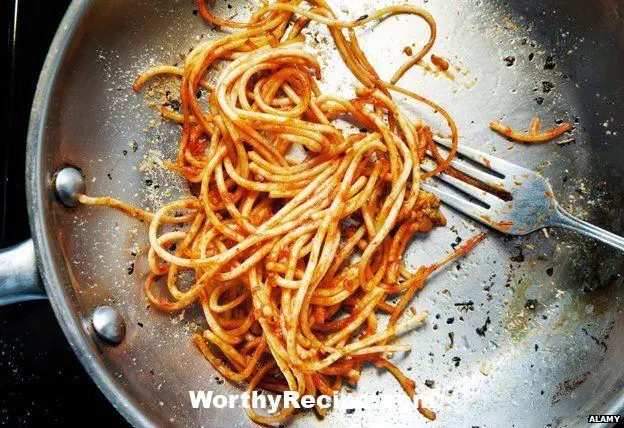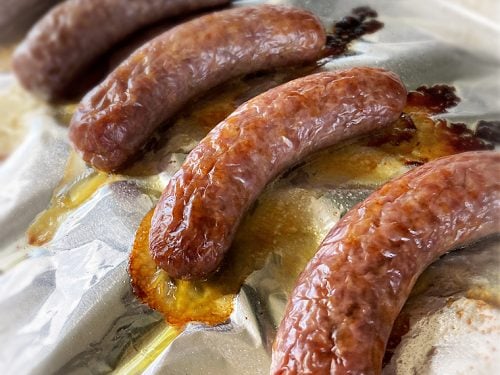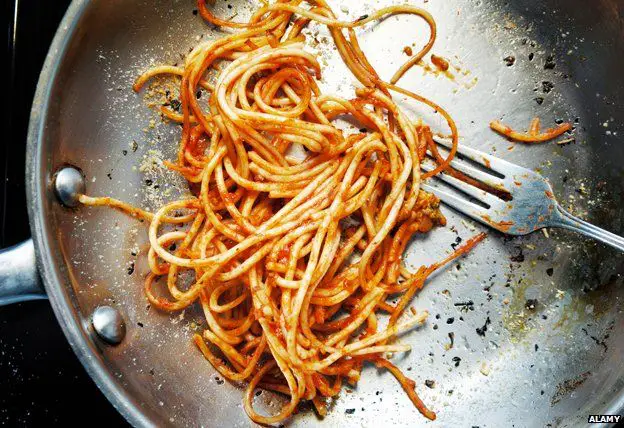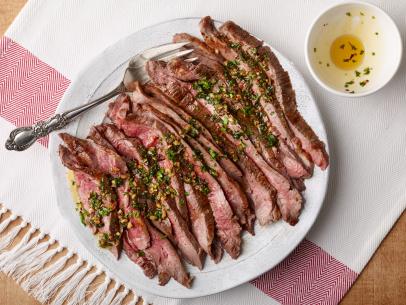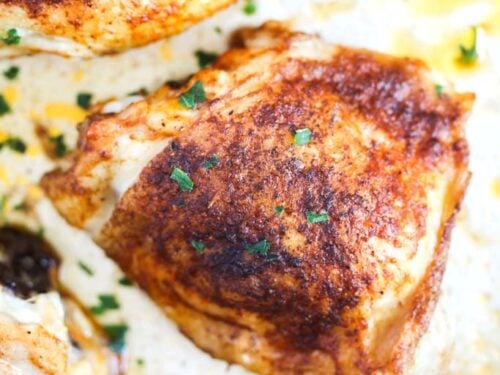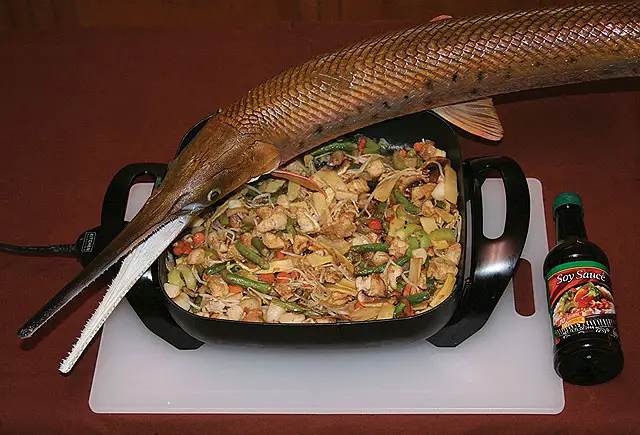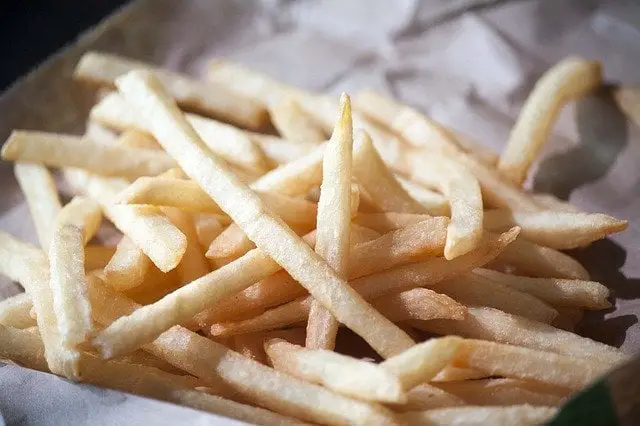Can You Eat Cold Cooked Noodles?
Noodles are a staple food consumed in many cultures around the world. They are versatile and can be used in both hot and cold dishes for any meal of the day. However, one question that arises is whether cooked noodles can be eaten cold. In this article, we will discuss the safety and benefits of eating cold cooked noodles, as well as provide some tasty and healthy recipes for noodle salads that can be enjoyed without fears of any health risks.
Why Would Someone Want to Eat Cold Cooked Noodles?
Eating cold cooked noodles has a number of benefits. For starters, it saves time and effort. Cooking noodles takes time, especially if you’re preparing a meal for several people; cooking noodles ahead of time saves significant amounts of time and energy in the kitchen. Additionally, cold noodles can be just as satisfying and filling as hot ones. They make for a refreshing, light meal on hot days when consuming heavier meals doesn’t sound appetizing. Eating cold noodles also provides an opportunity to get creative with your sauces, dressings, or toppings – it’s a chance to experiment with different flavor combinations that may not work in warm dishes.
Health concerns are also a factor that drives people towards consuming cold meals. Heat destroys some nutrients in foods like vitamin C, folate, and thiamine. While cooking reduces bacteria and other microorganisms that cause infections, overcooking can destroy these essential nutrients that support various body functions. Thus reducing heat in preparation to eat could minimize the nutrient loss.
Risks Associated with Eating Cold Cooked Noodles
Eating cold cooked noodles presents certain risks thanks to bacteria growth under specific conditions that favor their development. Bacteria grow rapidly between 40-140°F (4-60°C), which is the “temperature danger zone.” Cooked food should not be left at room temperature for more than two hours, especially if not stored in an airtight container. Bacteria could have accumulated on the noodles during preparation, cooking or storage, and consuming them without proper observance of the temperature-related precautions could cause illness.
Digestion issues may also arise due to reduced body temperature. Cold foods reduce metabolism, leading to inadequate digestion and eventual bloating and indigestion. Eating cold food lowers your body temperature, which stimulates your digestive system to work harder to keep your stomach warm. Increased acidity levels in the stomach can cause various digestive problems, including diarrhea, nausea, and bloating.
Best Practices for Safe Consumption of Cold Cooked Noodles
- When cooking noodles, ensure that they reach at least 165°F to kill any bacteria before serving.
- Do not allow cooked noodles to sit at room temperature for more than two hours.
- If you must transport your cold noodles from one location to another, use an insulated bag with enough ice packs to keep them cold during transport.
- Store the noodles in a sealed container and place it in the fridge if you plan to eat it later.
- Freshly cooked noodles should be refrigerated ideally within 2 hours. Leftovers should go into the fridge within four days after preparing it, or it won’t be safe for consumption.
It’s best practice to reheat cold noodles before eating them since reheating them can help kill bacteria that may have grown on the noodles. To reheat cold cooked noodles properly:
- Add broth or warm water to thin out the sauce and make it easier for the heat to penetrate through each noodle.
- Place the noodles in a microwavable dish with cover/lid to prevent moisture loss and leave an opening for steam to escape.
- Microwave at 30 seconds intervals, stirring occasionally until the noodles attain the right heat level throughout.
How to Enjoy Cold Cooked Noodles
Noodles can be served in so many different ways, and eating them cold provides even more options for flavor combinations. Here are some ideas on how to enjoy your cooked noodles cold:
- Add your favorite sauce or dressing to the cooked noodles. You can use vinaigrettes, pesto sauce, peanut sauce, soy sauce, or chili paste depending on your taste preferences.
- Toss in some veggies or fruits like cucumbers, carrots, avocados, mangoes and others that appeal to your taste buds for a sweet-and-savory combination.
- Add canned tuna or other proteins like grilled chicken for more sustenance and flavor.
- You may also incorporate fresh herbs like basil, cilantro, or mint represent a perfect way of adding zestiness and aroma to your pasta.
Varieties of Noodles that Can Be Eaten Cold
Noodles that hold up well when eaten cold include Italian pasta (like penne and fusilli), Asian rice noodles, udon noodles, and soba noodles made from buckwheat flour. These arrangements have distinct shapes that help enhance their flavor when chilled. Furthermore, they retain their texture very well despite being refrigerated and not getting soggy as opposed to their counterparts like spaghetti which might not be appealing when served cold.
Recipes for Healthy, Hearty Noodle Salads
Eating noodle salads can be a light, refreshing way to get a balanced meal. These recipes incorporate fresh vegetables and herbs for fiber and flavor while offering healthy protein sources.
Vietnamese Vermicelli Bowl Recipe
Ingredients
- 1 oz. dried rice vermicelli noodles
- 2 tablespoons fish sauce
- 1 to 2 tablespoons white vinegar or lime juice
- 1 tablespoon sugar (optional)
- 1 clove garlic, minced
- 3 -4 tablespoons hot water
- A few handfuls of lettuce
- 1 small carrot, julienned or shredded
- Few slices cucumber
- Mint leaves
- Cilantro leaves
- Basil leave, optional
- Sliced grilled pork, grilled chicken, pan-fried shrimp etc
Instructions:
- If using fresh rice vermicelli noodles, cook it following the package instructions. If you’re using dried rice sticks, first soak it in cold water for 30 minutes then cook after draining off the water. Rinse with cold water and drain.
- In a smaller bowl, whisk together the fish sauce, vinegar or lime juice, sugar (if using), garlic and hot water until the sugar dissolves.
- In a large bowl or plate, add the lettuce as your base.
- Add in the cooked rice noodles on top of the lettuce base.
- Add in your meat of choice.
- Add on julienned or shredded carrots and sliced cucumbers.
- Sprinkle with your desired number of herbs i.e., mint, cilantro, and basil.
- Pour the fish sauce/vinegar/lime juice dressing on top.
- Toss everything together to create a well-combined vermicelli bowl salad dish.
Zesty Soba Noodle Salad Recipe
Ingredients:
- 8 oz. soba noodles
- 1 red bell pepper, sliced thinly
- 1 cucumber, seeded and sliced thinly
- 2 medium sized carrots, peeled into ribbons
- A handful of fresh parsley, cut coarsely
- A handful of fresh cilantro, chopped coarsely
- 3 green onions (scallions) finely sliced
- 2 tablespoons smooth peanut butter
- 1 tablespoon soy sauce
- a clove garlic minced
- A pinch of red pepper flakes (optional)
Instructions:
- Cook the soba noodles as indicated on the package’s instructions. Immediately rinse them thoroughly with cold water for cooling.
- In a mixing bowl, whisk together peanut butter, soy sauce, minced garlic until it’s entirely smooth. You can add some water to thin out the dressing consistency.
- In another significant dish or bowl, mix all other ingredients (bell pepper, cucumber, carrot ribbons, parsley and cilantro leaves).
- Add the precooked soba noodles to the mixture and stir until everything is incorporated.
- Pour the dressing (sauce) over the top of your soba noodle salad mix and provide it with a gentle mix.
Common Misconceptions about Eating Cold Noodles
One common misconception about eating cold noodles is that they are not safe to eat. However, if prepared, stored, and reheated correctly, cold noodles can be completely safe to consume. Proper food safety measures like handling at the right temperature and storing appropriately in an airtight container significantly minimize the risk of bacterial growth on prepared foods.
Conclusion: The Verdict on Eating Cold Cooked Noodles
In conclusion, cold cooked noodles can be an excellent way to save preparation time while enjoying all the flavors that you love. It’s imperative to take proper storage precautions and reheating techniques to reduce bacterial contamination risks. Incorporating fresh ingredients and herbs provides more nutrients, enhances texture and flavor for this dish category. So go ahead, try out these excellent noodle salad recipes today while staying healthy and well-nourished!
Frequently Asked Questions
1. Can you eat cold cooked noodles for breakfast?
Yes, you can definitely eat cold cooked noodles for breakfast! As a matter of fact, it is a popular breakfast dish in many countries like Japan and Korea where it is served with veggies, egg, and meat. The dish is known as “Noodles in a Salad Bowl” in Japan and “Bibim Guksu” in Korea.
2. Are there any health risks associated with eating cold cooked noodles?
No, there are no health risks associated with eating cold cooked noodles as long as they are stored properly. Refrigerate the leftover cooked noodles in an airtight container to avoid the growth of harmful bacteria.
3. How can I make my cold cooked noodles taste better?
You can make your cold cooked noodles taste better by adding some flavorful sauces or dressings. For example, try adding soy sauce, sesame oil, rice vinegar, and chili paste to create a tasty sauce that will make your cold noodles more flavorful.
4. Can I freeze my leftover cold cooked noodles?
Yes, you can freeze your leftover cooked noodles! Just place them in an airtight container or freezer bag and freeze them for up to 2 months. When ready to eat, just thaw them out overnight in the refrigerator and reheat them in the microwave or on the stovetop.
